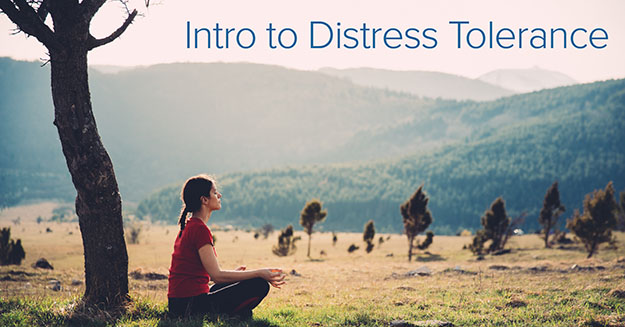
The circular definition of Distress Tolerance is tolerating distressing moments. This means that we get through a difficult moment without making it worse. We all have made a bad situation worse at some point in our lives. Either we picked a battle that we could not win or we “cut off our nose to spite our face,” Perhaps we sabotaged an event or we engaged in self-harm.
Distress tolerance skills are designed for short-term use. They are for moments when our primary goal is to keep from escalating and doing something that we later regret. Sometimes they are referred to as the “calm-down skills.”
At times, the distress tolerance skills seem to be contrary to other teachings of DBT, which can lead to confusion. To help navigate this concept, it is helpful to think of the primary objective of distress tolerance, which is to not make the situation worse.
Distress tolerance skills keep us from engaging in dangerous or self-destructive behavior. If we are in an escalated emotional state and have an urge to self-harm, a distress tolerance skill may be to play a video game.
Yes, we may be avoiding a situation that requires our attention. However, if presented with the choice of self-harm or video game, it seems that the video game is the healthier choice. Once we have calmed down, we still have an obligation to address the issue.
The big difference between Distress Tolerance skills and other DBT skills is the time frame in which there are used. Distress Tolerance skills are short-term and mitigate crisis situations by not making things worse.
These skills often are criticized as avoiding the situation. This is true, but only temporarily. We can take time to calm down before returning to the issue and responding to it effectively.
One component of distress tolerance is to be open and willing — like water, as explained by Bruce Lee.